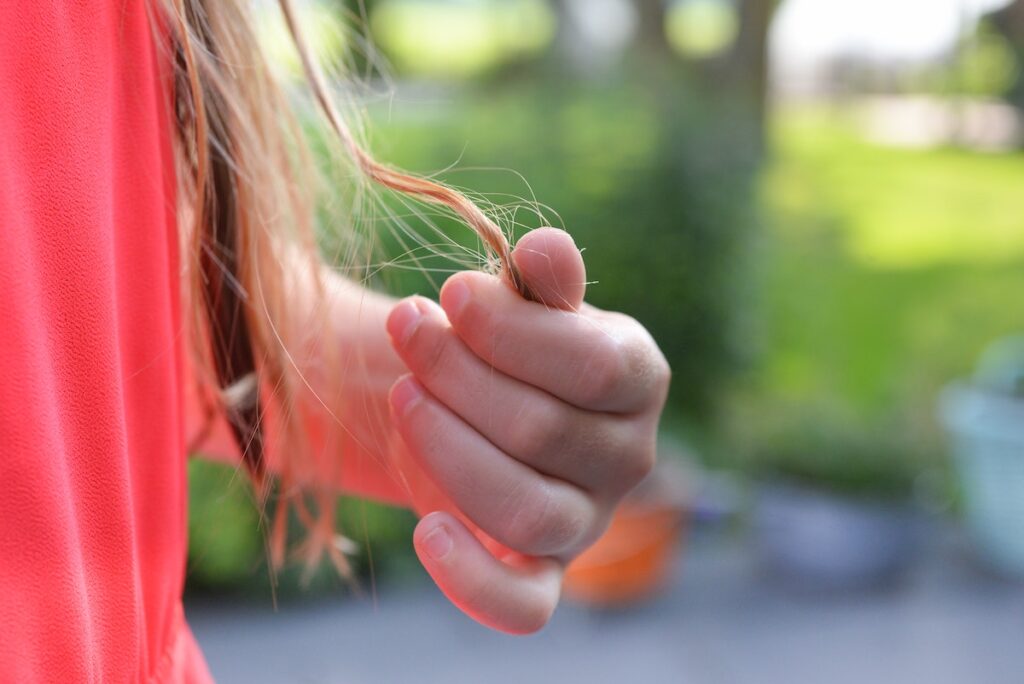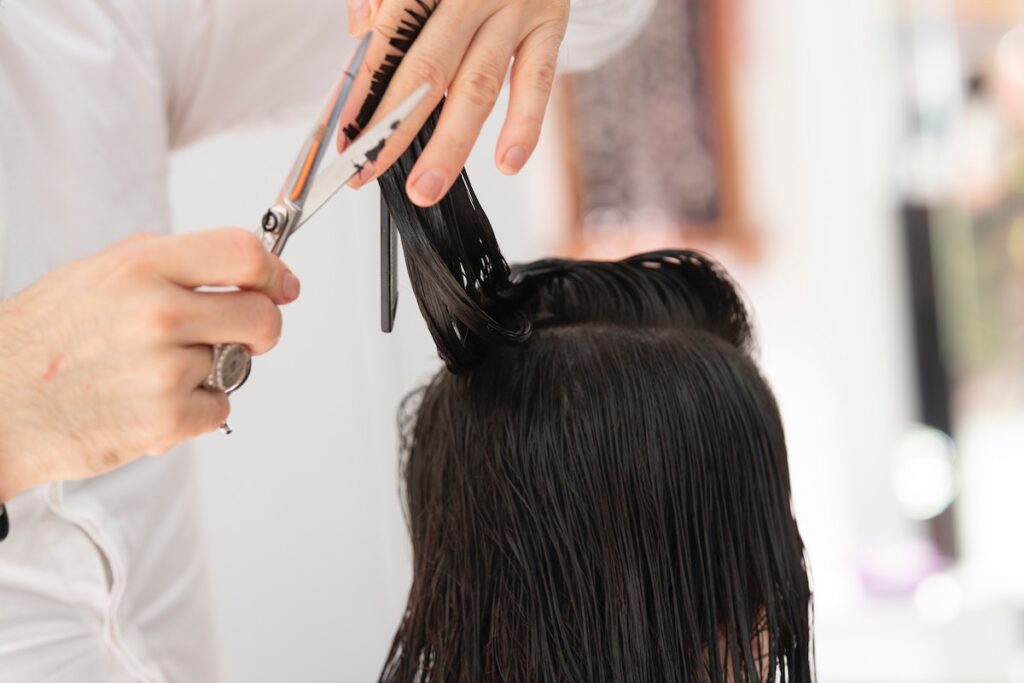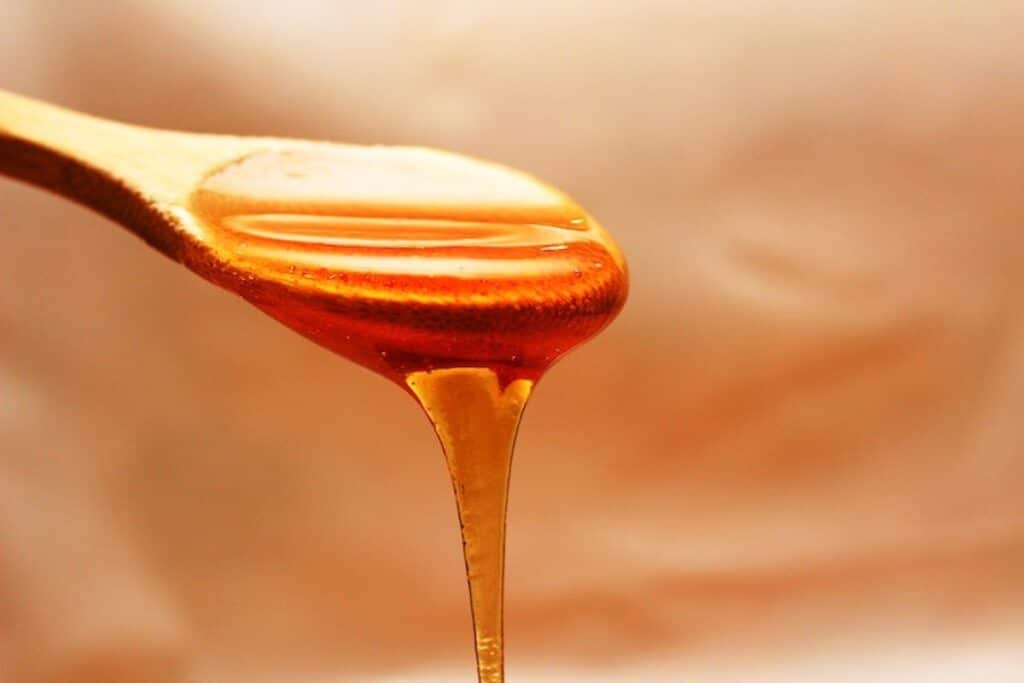A cascade of thick hair, bursting with vitality, reflecting the light from root to tip with the slightest movement, and why not a mass of supple, toned curls to complete this idyllic picture... Who among us doesn't feel a little depressed when comparing our own 'mane' with the sublime hair sported by many of our favourite stars? Our everyday lives are probably less glamorous, but there's nothing to stop us having shiny, supple, healthy hair. Having brittle, dry, dull and damaged hair is not inevitable. Instead of resigning yourself to hair breakage, dryness and split ends, start by understanding what makes hair brittle to avoid the "gestures that kill" and undertake an effective beauty routine to quickly restore healthy, silky hair.
What is brittle hair?
Brittle hair is fragile, weak, unhealthy.

What is brittle hair?
A simple test to determine the strength (or fragility) of your hair is the elasticity test. Healthy, strong, solid hair is resistant to traction, so it needs to be elastic.
Here's how to check the health of your hair:
To do this, take a strand of hair from your head and gradually stretch it, holding both ends firmly between the thumb and forefinger of both hands. If your hair breaks quickly, without lengthening, that's a bad sign. And the faster it breaks, the less it stretches, the worse the sign. Key point: normal hair should be able to lengthen by 25 to 30 % (when relaxed, it should return to its original shape, whether naturally straight or curly).
Main cause of brittle hair
If the hair has lost its elasticity, it is suffering from dehydration, it's too dry. When all goes well, the scales of the cuticle protect the hair fibre and, thanks to the sebum, coat the hair with a protective barrier while maintaining a sufficient level of moisture at its core. The result: smooth, supple, shiny hair. When the scales no longer play their role as a protective shield, problems arise: lacking moisture, hair becomes too dry, so it breaks at the slightest touch. Breakage can occur at any distance from the top of the head: a few centimetres or closer to the ends. Don't confuse hair that breaks with hair that falls out. A hair that breaks is a "piece" of hair, it has no root. A hair that falls out includes the root. Obviously, and unfortunately, you can suffer from both problems at the same time! Have an in-depth hair diagnosis carried out to find out more.
Naturally dry, fine and fragile, curly hair is particularly susceptible to breakage. That's why it's often believed that frizzy hair doesn't grow or no longer grows. It's a question of perception and misunderstanding the way hair actually grows. curly hair grows a little more slowly than other hair types, it's true, but it does grow! On the other hand, it breaks more easily because it's often subject to more cosmetic manipulations and hairstyling which can be harmful to keratin. More damaged, it grows poorly and requires repair treatments that are well adapted to its nature.

Your brittle hair is sick hair. It has aged prematurely, its keratin having lost its elasticity.
There are several reasons why hair becomes dehydrated - and therefore fragile - to the point where it becomes brittle:
- a physiological cause: your scalp is genetically programmed to produce little sebum (cf. dry hair).
- a cause linked to a health problem: an imbalance in the thyroid, anaemia (iron deficiency)...
- a cosmetic cause: hair that has broken off after relaxing or hair straightening techniques are commonplace. When relaxing is not carried out correctly, you can end up with an abnormal amount of brittle hair, which needs to be repaired as a matter of urgency.
When it comes to hair that's so damaged, even the smallest things can have devastating effects: putting hair in a ponytail with too tight an elastic band, braiding hair by pulling on each strand, using a straightening iron that's too hot on the lengths and top of the head, and even brushing hair too vigorously - all these habits are risky for dry, brittle hair.
Split ends
Split ends are also a sign of prematurely aged hair. Split ends are another sign of dry, dehydrated and damaged hair. In the best cases, split ends appear at the ends of the hair or in the last few centimetres, where the keratin is most fragile. In more serious cases, the fibrils that form the keratin are completely separated. If you want to get rid of split ends, there's only one solution: cut off the split ends. No hair care will be able to reunite them.

To get rid of split ends, the solution is radical but effective - and often unavoidable: cut them off!
But with the right treatment, they won't reappear on hair that grows back.
What can I do to stop my hair breaking every time I handle it?
What are the right treatments for repairing dry, brittle and split hair?
Discover our expert advice!
WHAT TO DO ABOUT BRITTLE HAIR
The first step is to make sure that you do not suffer from any illness or deficiency that could have an impact on the condition of your hair; if this is the case, medical treatment may be required, vitamin supplements will also help you and your hair get back on the road to health.
Next step is trying to eliminate habits that damage hydration of the hair and dry out the keratin:
- we leave out - or better still, forget - all chemical treatments that cause deep damage to the hair fibre: straightening, whether it is Brazilian, Japanese, ..., relaxing, are to be avoided wherever possible
- In the same spirit, space out colouring - especially if it's chemical - and only apply colour to the first few centimetres of regrowth on the top of the head. There's no need to weaken the ends every time: if you don't, broken and split ends are guaranteed!
- Aggressive shampoos and hairstyling, blow-drying is traumatic for the hair; if you can't avoid blow-drying, first blow-dry your hair with cold air, until it's practically dry. Only use your brush (with warm air) to give your hair its final shape.
- Also enemies of hair, sun, bathing in the sea or swimming pool dehydrates and burns your already fragile keratin.
- Say no to silicones ! Read the labels on your haircare products carefully: be careful, because regular use of so-called "nourishing products for the ends", for example, should be avoided if they contain silicones, as they will eventually dehydrate the hair.
- Even if you choose harmless products, be careful how much you apply and don't overload your lengths with products that are too rich or unsuitable.
- Regular use of hairsprays or gels should also be avoided, as they tend to thin the keratin.
Finally, let's put a specific anti-breakage hair routine in palce.
The primary objective of a treatment for dry, brittle hair is to protect the hair and scalp and the alpha & omega is : HYDRATATION.We can't stress this enough! Nourishing hair from the inside with active ingredients that penetrate to the very heart of the hair fibre will help hair regain its elasticity, shine and strength: no more hair that falls out!
- Do hydrate your hair with moisturising masks or oil baths before shampooing. It's important to be gentle and to set aside a little time to pamper your hair - it will thank you for it.
Our special advice for brittle and split hair : your treatment must penetrate to the heart of the cortex (inner part of the keratin), so apply masks of moisturising and protein-rich plants, to rebuild the defences your hair has lost. But your masks must also contain plants rich in the essential fatty acids that your hair has also lost. This is to seal the scales of the cuticle (the outer part of the keratin). Wheat germ oil is a powerful antioxidant, rich in vitamins and with great moisturising power. Jojoba oil is also renowned for its moisturising properties, and can be used pure or diluted in a deep nourishing treatment. See Clauderer Baume No. 56 or Clauderer Baume N°57 for specific care of devitalized, very dehydrated hair.
This is our routine for a deep, repairing mask for broken hair :
- First, massage the mask into your hair, strand by strand. Twist and untwist gently, pressing for a long time.
- Next, wrap your hair in a towel that has been run under hot water and wrung out well.
- Finally, keep the mask on your head for at least 30 minutes. Then wash your hair with a mild shampoo or cleansing cream. In the final rinse, add a little cider vinegar or lemon juice to remove limescale from the water.
- For detangling and styling, use only natural tools: a brush with wide bristles, a tortoiseshell or horn comb, or simply your fingers (for relaxed hair)!
- As with care products for dry hair, a diet rich in essential fatty acids and vitamin E is recommended. Essential fatty acids (EFAs) nourish the deep layers of the skin and are essential for the production of new cells in the hair growth zone, which surrounds the hair follicle and root. Vitamin E, on the other hand, prevents EFAs from going rancid. The more EFAs we ingest, the more vitamin E we need to protect them from oxidation. In tandem, EFAs and vitamin E help lubricate the hair, making it less dry and less brittle. You will find them in: walnut oil, grapeseed oil, sunflower oil (cold pressed), wheat germ oil, cold sea fish, fish eggs, etc.

Plant oils, a beauty boost for brittle hair!
If your hair remains too dry, brittle and split despite all this advice, have a in-depth diagnosis of your hair with root and keratin analysis. We can help!
Answers to your questions about split ends and brittle hair
Can hair breakage have an internal cause?
Yes, keratin can be weakened by hypothyroidism, which slows down sebum production (the hair is less well sheathed and protected), by hyperthyroidism, which speeds up hair renewal (and therefore hair thinning) and finally by an iron deficiency (roots less well oxygenated and nourished), which results in keratin becoming brittle.
Why do we have brittle hair?
There are many reasons for hair breakage: physiological causes: anaemia, thyroid imbalance, etc., cosmetic causes: too frequent colouring with poor-quality products, repeated cosmetic manipulations (perming, straightening, relaxing), hair bands that are too tight, incorrectly used hairdryers, etc. In all cases, it is important to repair and rediscover a healthy lifestyle and a suitable hair routine.
How to treat brittle hair naturally?
To treat brittle hair, there's nothing like a nourishing mask to repair the hair fibre. A treatment rich in natural plant oils will increase the hair's resistance and provide long-lasting hydration to the hair fibre, while filling in the micro-cracks responsible for the hair's fragility. Beeswax forms a protective barrier on the hair's surface. A deep treatment that combines emollient action (hydration) and film-forming action (protection against external aggressions) is therefore ideal for repairing and protecting.

